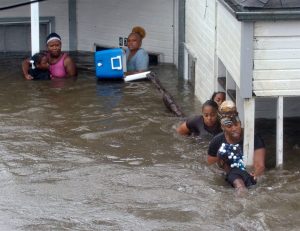Hurricane Katrina was one of the most devastating natural disasters the United States had ever seen. One of the things that made it so devastating were the rescue response times not fulfilling the situations needs. Flooding had never happened so abruptly before so the rescuers weren’t knowledgeable on how to react.
“During Hurricane Katrina, as residents of New Orleans were left stranded in the floodwater, thousands of firefighters who had assembled to help rescue people instead spent days wading through paperwork and completing training on federal sexual harassment policies,” stated The New York Times.
So learning from Hurricane Katrina’s mistakes, clearly there was much more preparation for Hurricane Harvey. Most of the paperwork was completed before the Hurricane started so all troops were available for the Hurricane rescues. While they were all available, they were additionally more trained for these rescue situations. During Katrina’s missions, only 40 percent of troops felt confident in their rescue plans. That number soared to 80 percent with Harvey’s missions. Local and federal authorities also learned these training methods so that everyone would be on the same page and no miscommunication could be made.
 Katrina vs. Harvey
Katrina vs. Harvey
Katrina’s rescue teams additionally didn’t want the public helping out with the crisis because they were saying it was a “potential liability.” Seeing how much slower the rescue missions went without more help, the troops realized that the public help is exactly what they needed. The problem that did occur during Harvey, however, was that that the public wasn’t knowledgeable about how the rescue missions were supposed to be handled, so miscommunication did start to occur during this crisis.
Another major issue with Katrina’s rescues was that flooding was so extreme that trucks filled with emergency supplies weren’t able to get to neighborhoods in need, forcing them to wait out until the water level went down. With Harvey, they were capable of placing the emergency supplies before the storm hit so that people were able to have access to them immediately. This helped keep the people feeling safe knowing they had access to food and medical equipment.
There still are many lessons to be learned from these natural disasters, but each one seems to be teaching us new ways to enhance the evacuation techniques.
